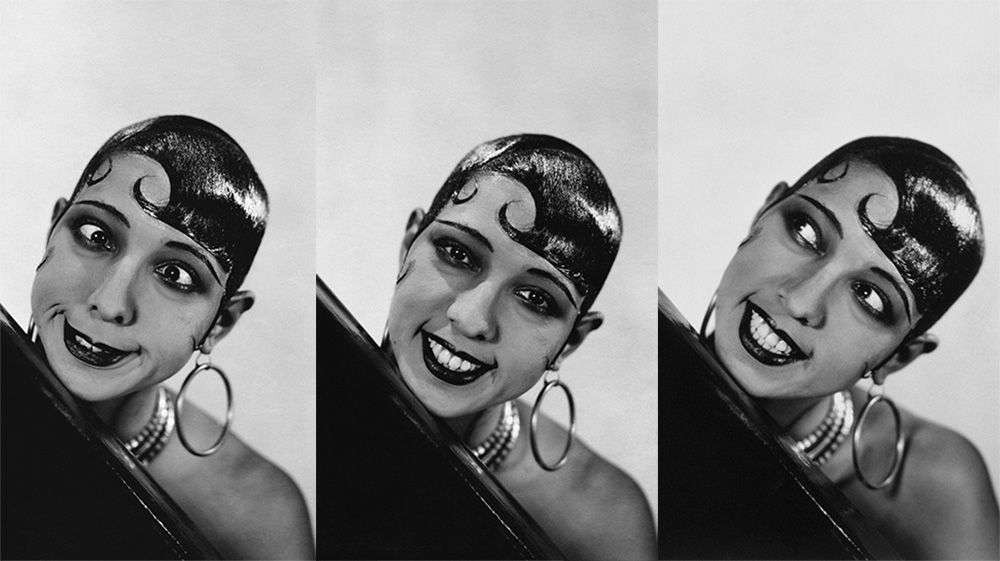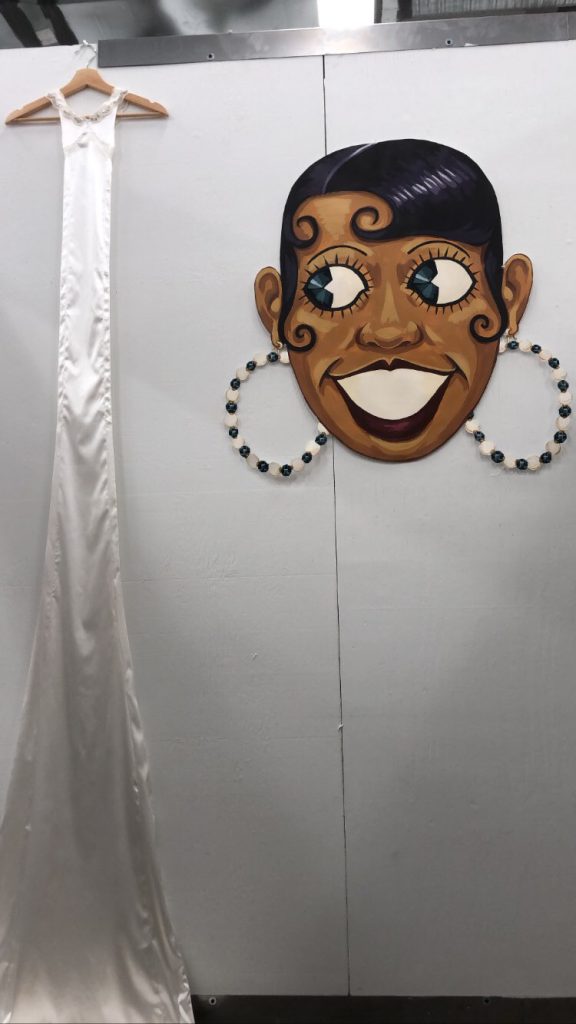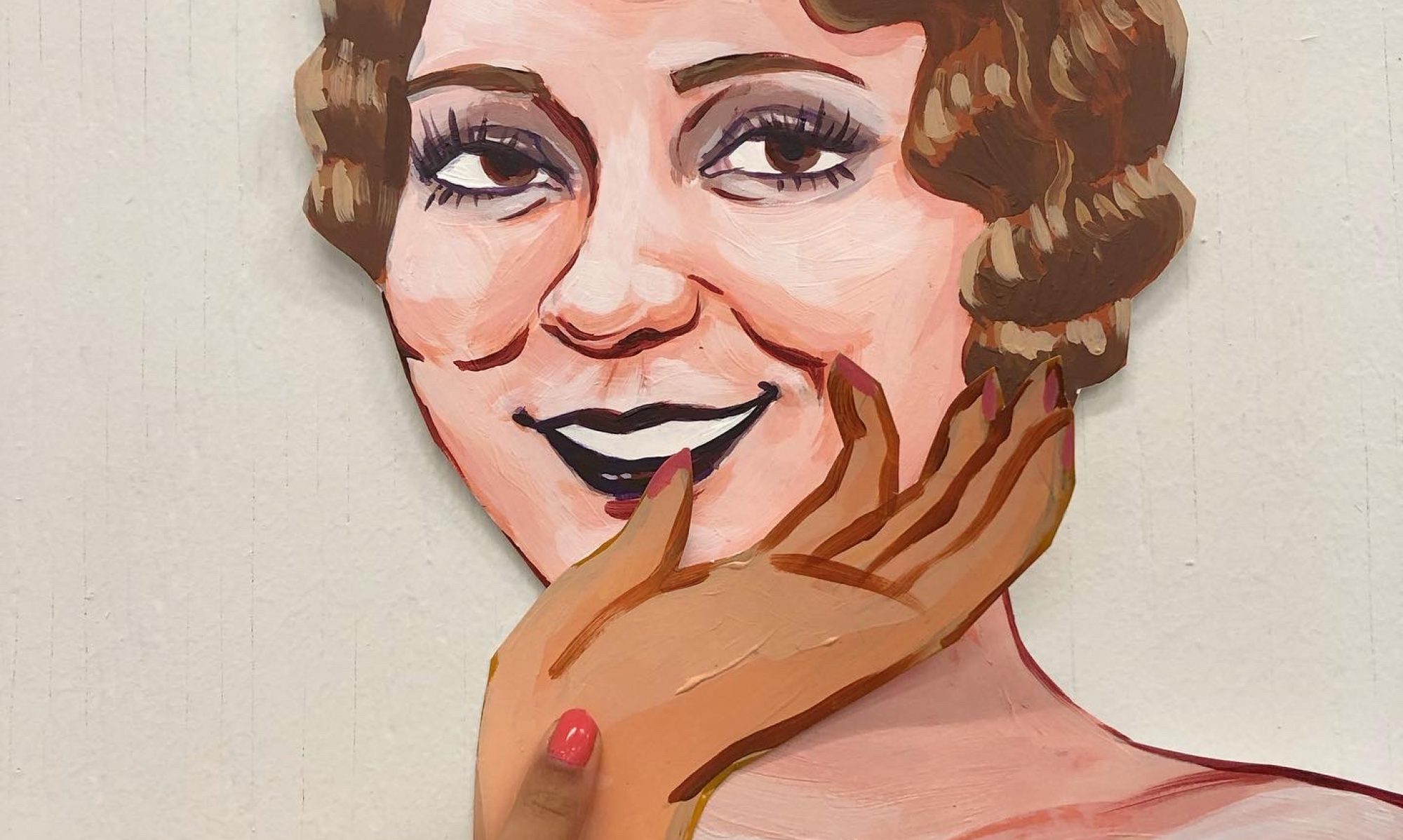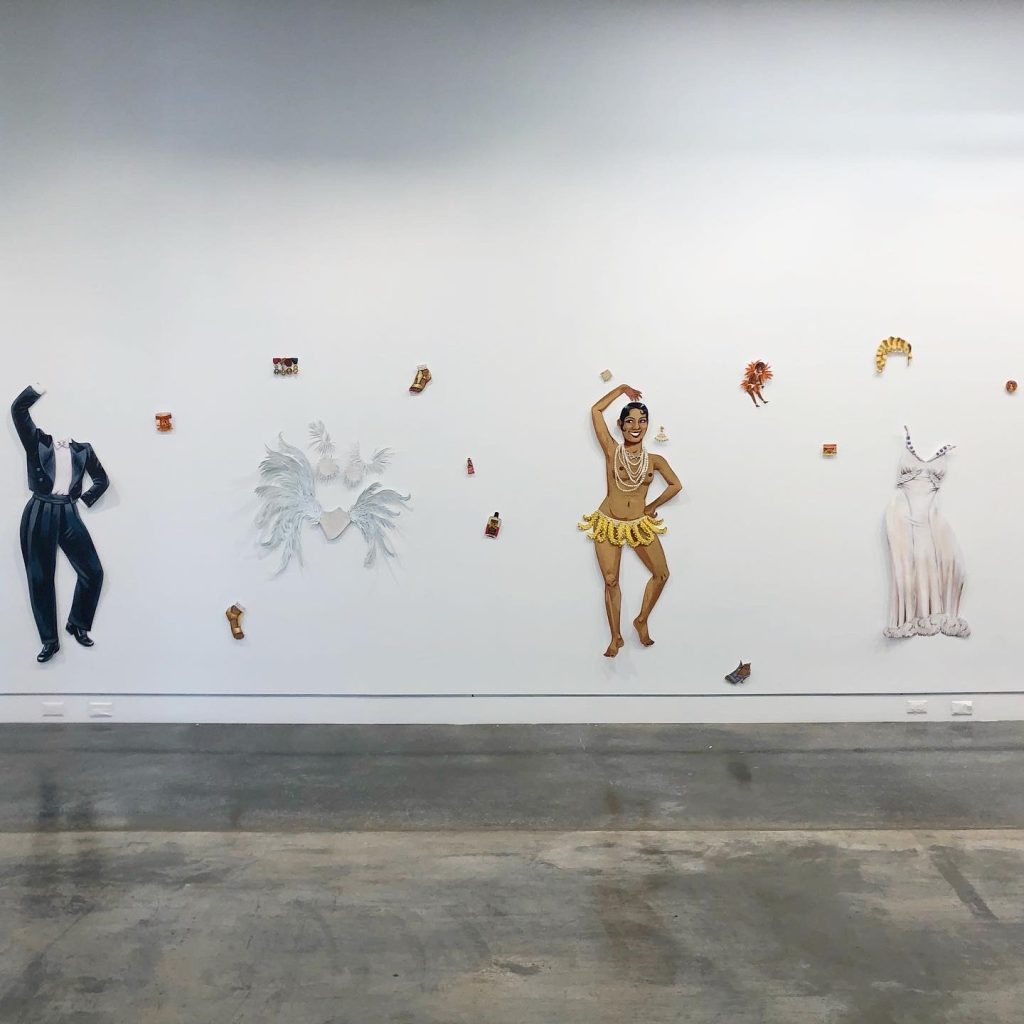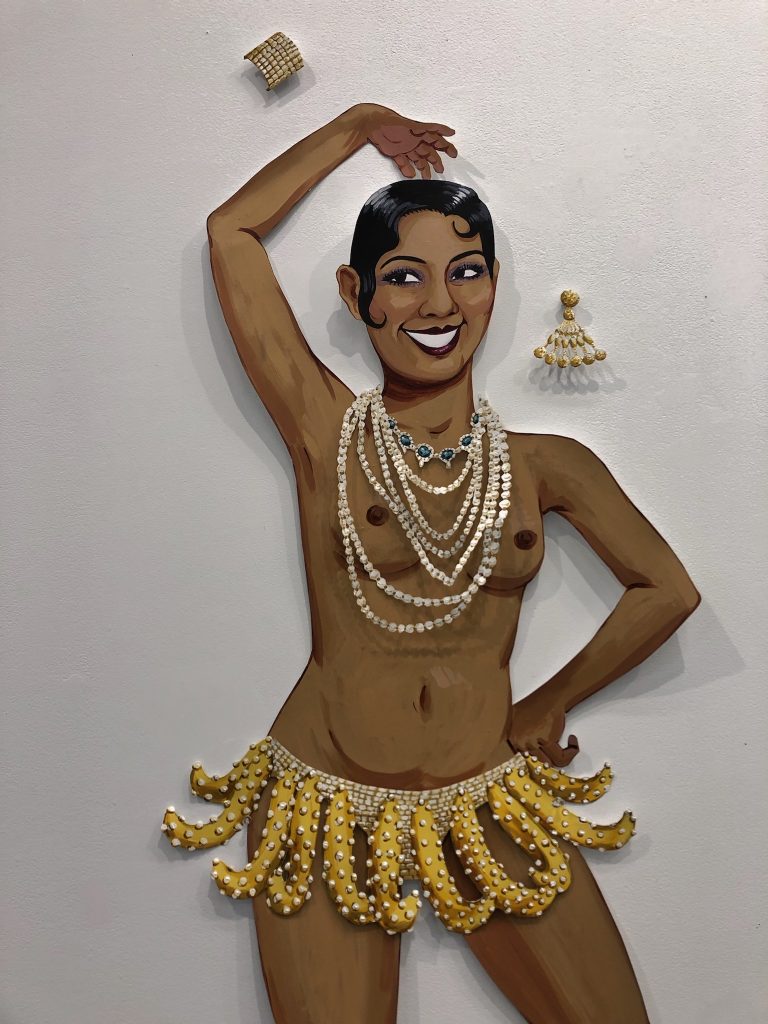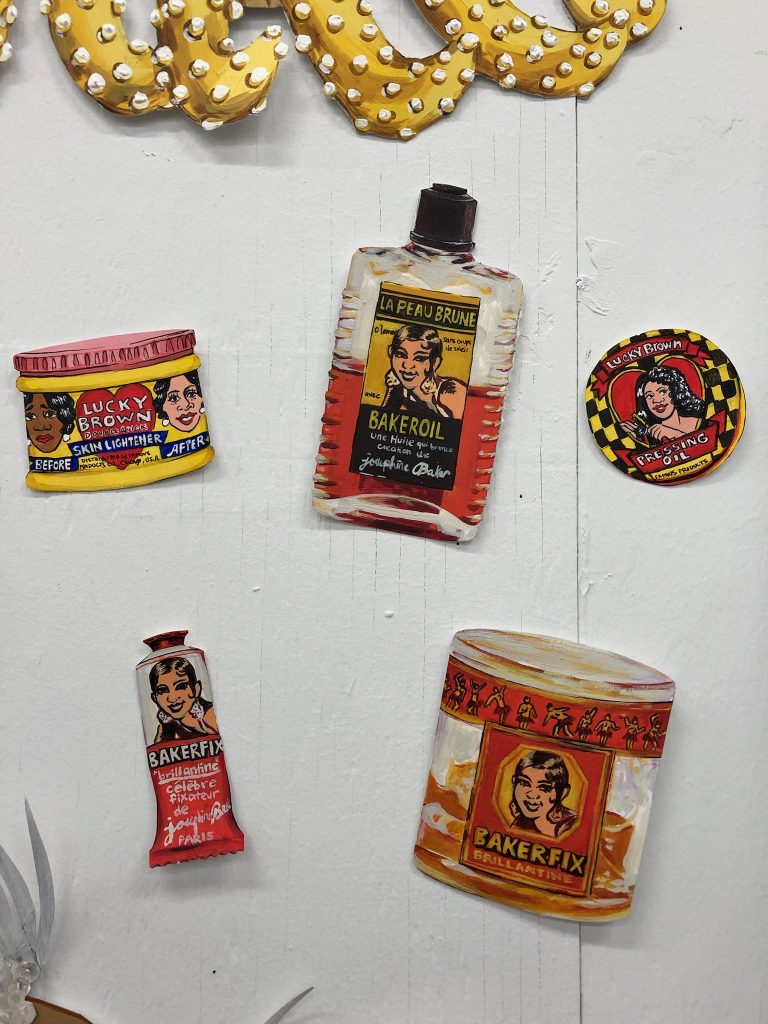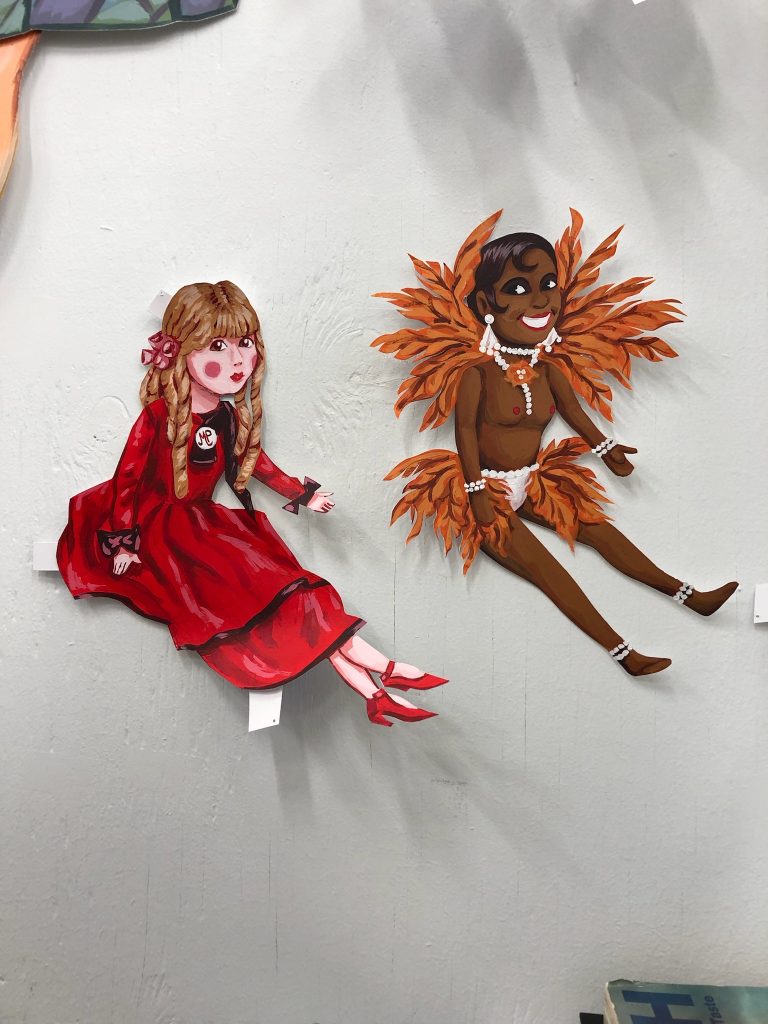I’m currently experimenting with fabric and clothing as a way to think through my research + practice. This started with an exaggerated gown that is both too tiny and long for the human (femme) body. The design references a dress Josephine Baker wore in one of her many stage performances, in which she wore a blonde wig, lightened her makeup, and sang “Si j’etais blanche!” I came across some press photos of her promoting the number in my research of the historical figure and was immediately struck by the horrifying and sad nature of the images. The dress in these photos served as a signifier for the contradicting ways Josephine manipulated her racial identity for French audiences in the 1920s and gives a telling glimpse of her inner turmoils as a fetishized Black performer thrust onto the world stage.

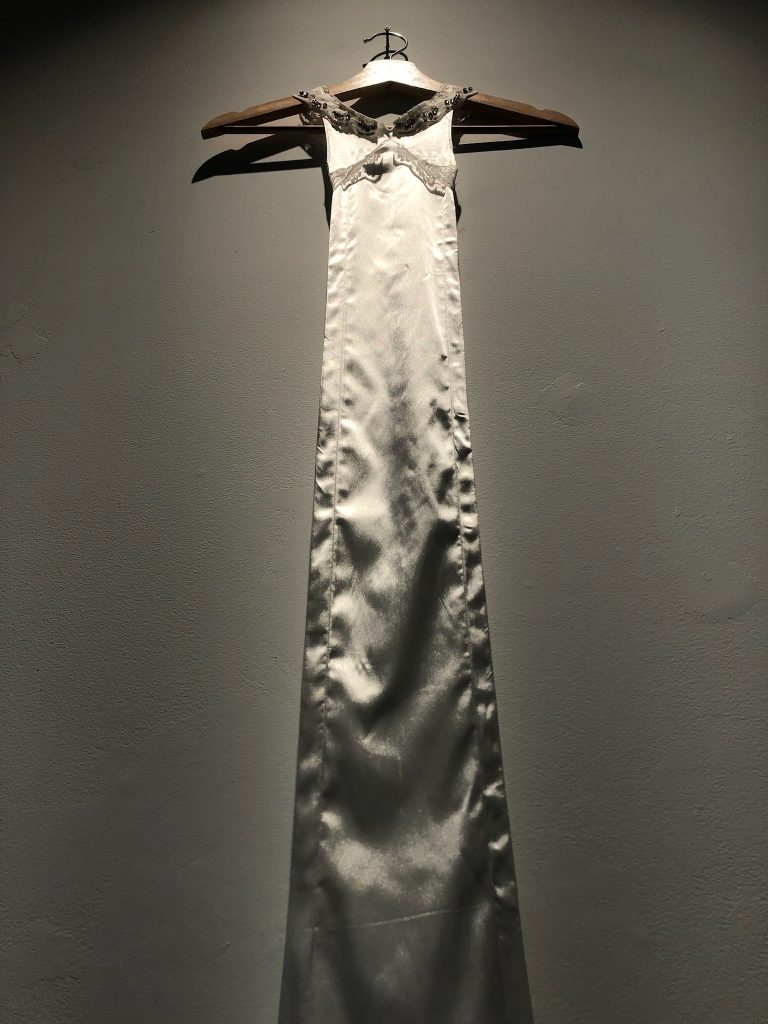
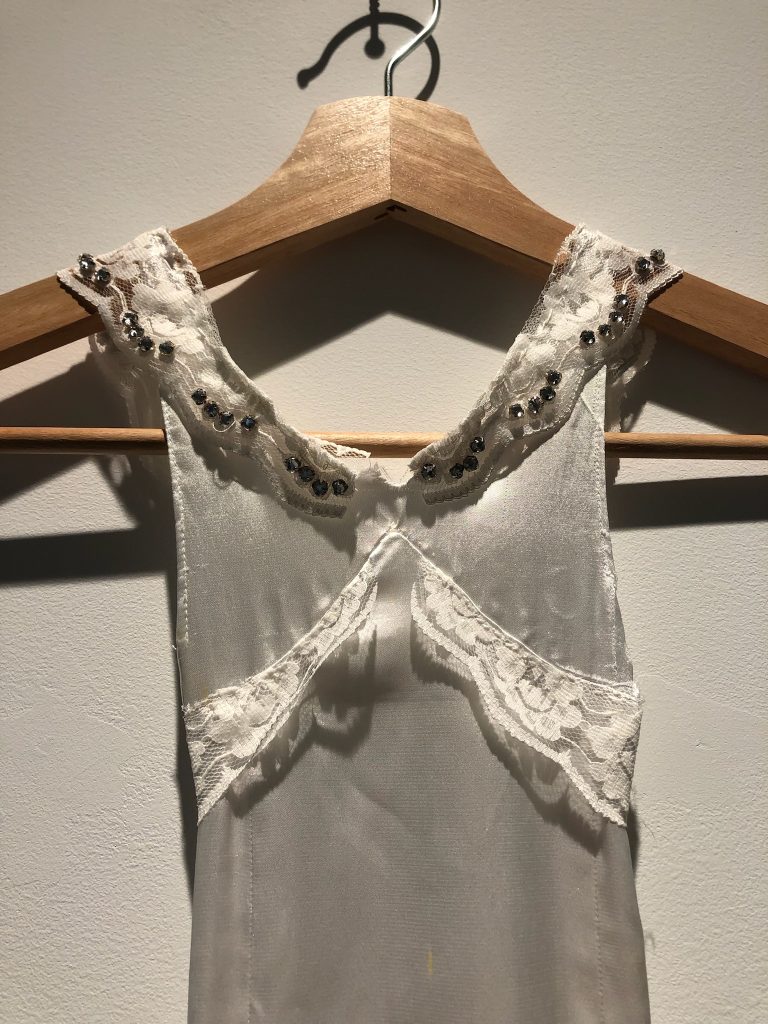


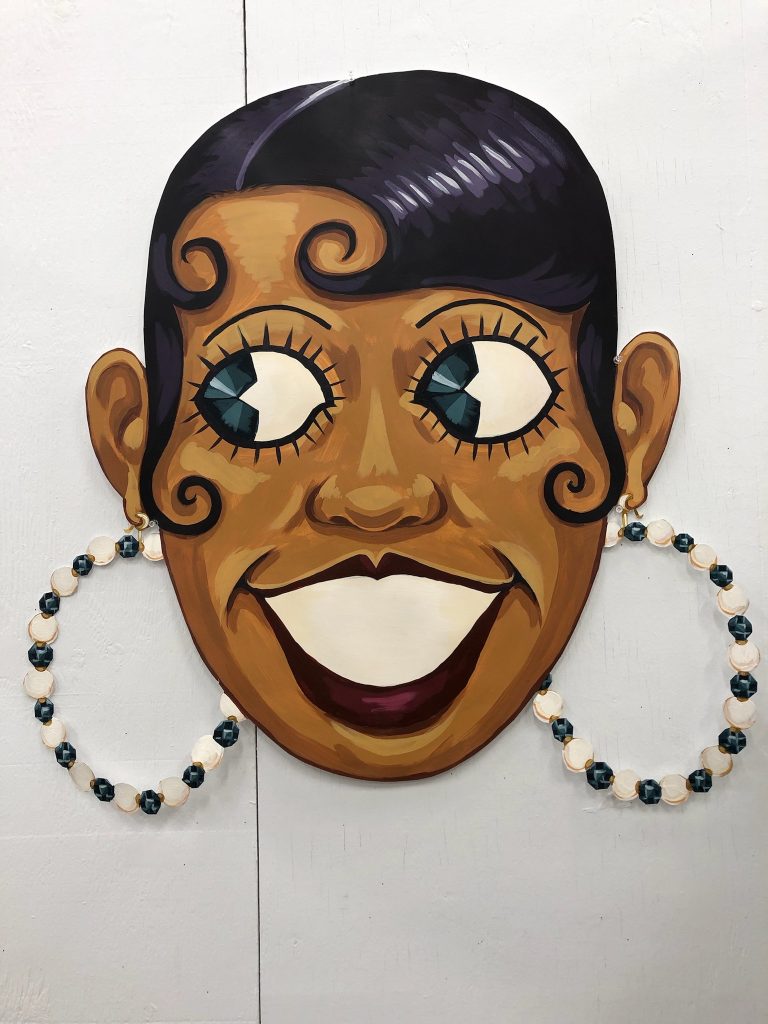
Another current work is a large acrylic painted image on paper. Using the same materials as the paper dolls, this giant face plays with the history of caricature, exaggeration, and retro style to create a larger than life image of Josephine. I looked at cartoons and advertising illustrations from the 1920s for inspiration.
